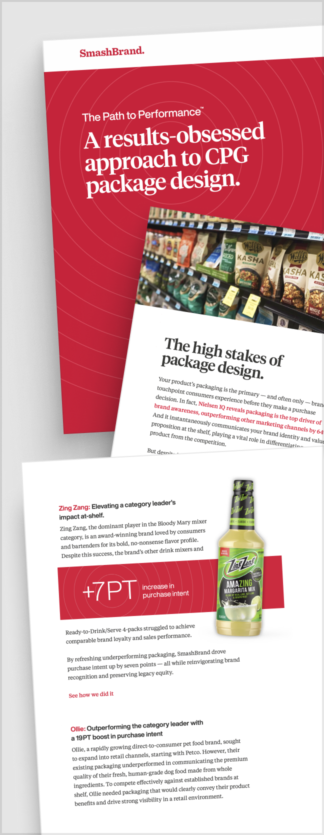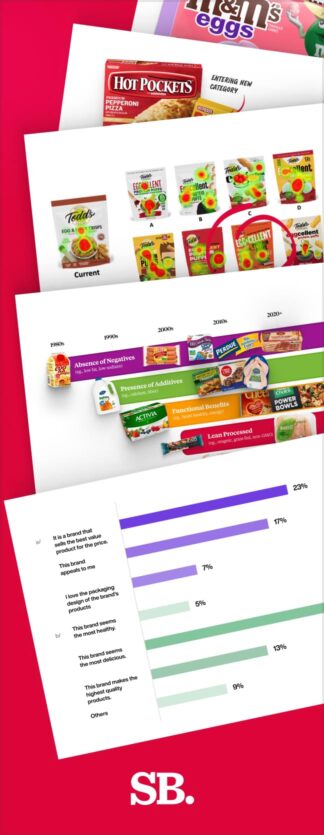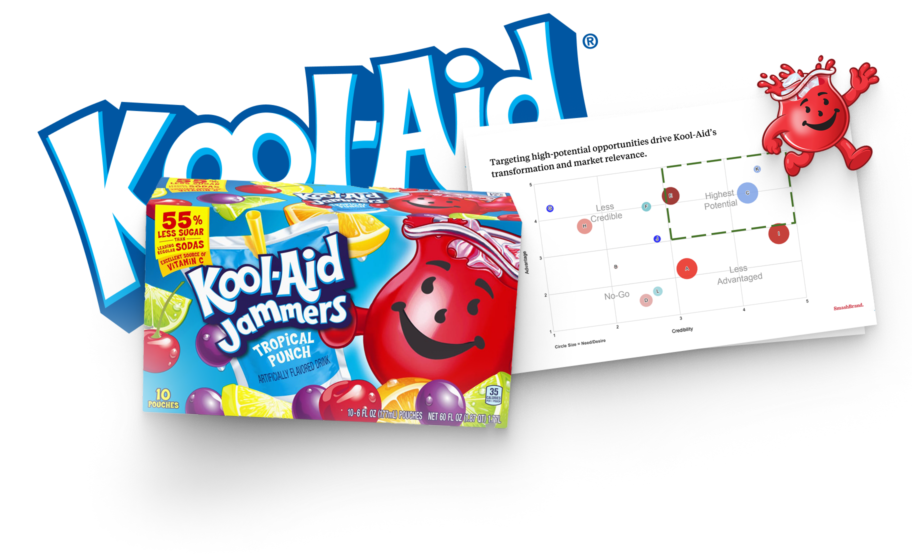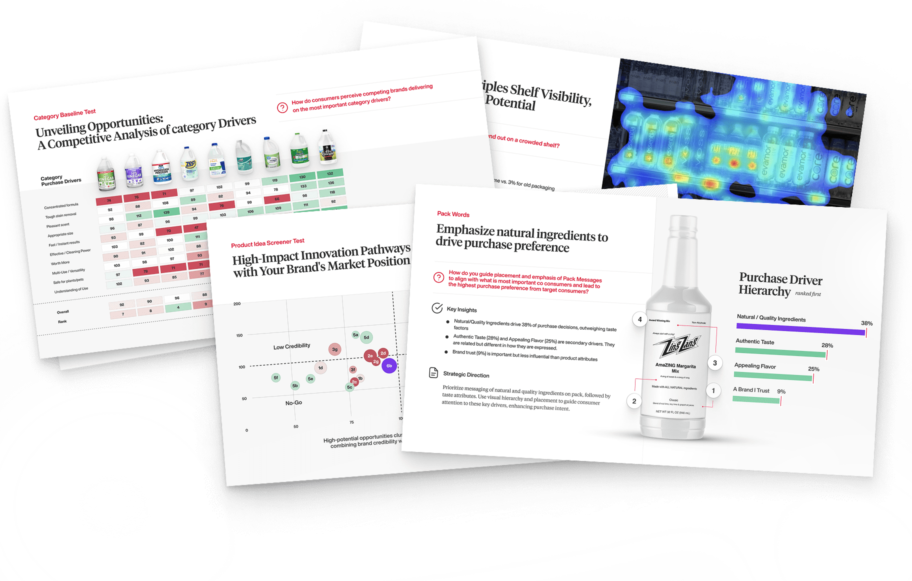Consumers are no longer loyal to a channel. They discover a product on social media, research it online, and pick it up in-store—all without a second thought. But if your brand isn’t built to flow seamlessly across multiple channels, you lose them at every step. Inconsistent messaging, weak packaging, and scattered brand positioning create confusion, killing trust before the sale happens. In today’s market, a channel agnostic approach is critical for survival.
Winning omnichannel brands create a unified, data-backed experience that meets consumers where they are. Deep learning and consumer behavior insights drive innovative retail brand development, ensuring brand consistency from digital touchpoints to shelf presence. If you’re only selling to a category, you’re at risk. You get delisted or repositioned and scramble for a new retail partner. Without a strong channel-agnostic approach, your brand loses momentum.
In this article, you’ll learn why channel agnostic branding is the key to winning more customers and how to implement it effectively. We’ll break down what makes a brand unforgettable across every touchpoint—without guesswork. By the end, you’ll know how to create a brand that thrives in any channel, backed by insights that drive real growth.
What is channel agnostic branding?
A channel-agnostic approach ensures a seamless brand experience across all different channels—whether a consumer discovers your product on social media, in-store, or online. It prioritizes global brand development, maintaining consistent messaging, design, and positioning in a dynamic environment without favoring a specific channel.
For example, OLIPOP is a functional soda brand that engages its target audience across DTC, retail, and digital platforms without losing its nostalgic, health-forward identity. Their strategic archetype development ensures they resonate everywhere. Another example is Hu Kitchen, which successfully expanded from boutique stores to Target and Whole Foods by leveraging consumer insight and aligning branding across all touchpoints.
Brands that master this strategy don’t just exist in different channels—they create enhanced experiences driven by actual consumer behaviors, ensuring a lasting connection with their audience wherever they engage.
The power of a seamless brand experience.
Consumers expect brands to deliver a consistent, unified experience across all touchpoints. Trust erodes, engagement drops, and sales suffer when branding feels disconnected. Inconsistency confuses consumers, making them question quality, credibility, and their preference for your product.
A seamless brand experience requires alignment across visual identity, messaging, packaging, and positioning. A strong brand personality ensures that no matter where a customer encounters your product, it feels familiar and reliable. Enhanced functionality in packaging design reinforces convenience, while cohesive storytelling across different marketing channels builds recognition.
Key components of a winning channel agnostic strategy.
Every brand needs three essential components: a unified brand identity, optimized customer interactions, and strategic execution across traffic sources. Let’s discuss each and learn what they are all about:
A unified brand identity.
Consistency is the foundation of brand trust. A disconnected look or message across devices—whether in a paid ad, an influencer post, or an e-commerce listing—creates confusion and weakens consumer confidence. A strong brand architecture ensures clarity, especially for companies managing multiple product lines. Without it, sub-brands risk competing rather than complementing each other.
Innovative brands analyze traffic sources, refine their messaging for influencers, and collaborate with an experienced agency to maintain a seamless experience across channels. When branding is intentional and aligned, consumer recognition and loyalty follow.
Packaging as a universal touchpoint.
Packaging is more than a container—it’s a brand’s first and most lasting impression. It sets expectations whether a consumer discovers your product on a shelf, in an unboxing video, or through an e-commerce listing. Successful brands leverage packaging as a model for brand consistency, ensuring the design translates seamlessly across digital and physical spaces.
A well-designed package bridges this gap by integrating compelling content, clear messaging, and a structure optimized for retail visibility and online display. Brands that invest in creative brand development create packaging that stands out in any setting while reinforcing a cohesive brand experience.
Leading brands use data-driven packaging design to maximize their impact. They combine competitive analysis with insights from party providers and retail partners. This approach strengthens relationships with consumers and retailers, ultimately driving higher engagement and sales—no matter where the purchase happens.
Understanding consumer purchase drivers.
Subconscious triggers, brand perception, and targeted advertising influence every purchase. Successful brands don’t guess what works; they use data and testing to uncover the purchase drivers that matter. Without this insight, brands risk wasting resources on messaging, visuals, and value propositions that fail to connect.
Leading brands analyze how consumers engage across mediums, from e-commerce to in-store shopping, identifying what influences conversion. A brand that excels in one channel but falls flat elsewhere lacks the strategic expertise needed for actual market performance. That’s why brilliant companies partner with data specialists and leverage insights from traditional sources like radio and digital-first platforms powered by content creators.
Aligning online and offline presence.
Brands that succeed know how to translate e-commerce performance insights into in-store execution, refining shelf presence based on what works digitally. But many digital-first brands struggle when transitioning to retail. Without the right brand development strategy, their once high-performing assets fail to stand out in a physical environment.
The key is maintaining the brand foundation while optimizing for retail realities. This means evaluating brand development questions like: Does our value proposition communicate in seconds? Do our colors and typography hold up under store lighting? Successful brands work with content creators and leverage targeted advertising to build familiarity before a product reaches the shelf.
Smart brands also invest in in-store solutions that strengthen relationships with retailers. Whether testing new packaging mediums or refining messaging through retail insights, brands that combine expertise with real-world data maintain consistency—online, offline, and everywhere.
The hidden costs of getting it wrong.
When branding lacks consistency across channels, the damage is immediate—lower conversion rates, consumer confusion, and lost revenue. A brand that looks and feels different online versus in-store forces consumers to second-guess its credibility. Without strong brand development in marketing strategy, brands struggle to build trust, leading to weak engagement and poor sales performance.
One of the biggest mistakes is overlooking packaging. Poor product brand development leads to weak shelf visibility and low purchase intent, meaning your product gets ignored next to competitors. A design that works in a digital ad but fails to pop under retail lighting won’t convert shoppers. Brands that ignore real-world packaging performance lose their chance before the consumer picks up the product.
Subjective design choices only add to the risk. Without testing, brands rely on opinion rather than data. A weak brand development index or low positioning scorecard signals trouble—proving the brand lacks alignment with consumer expectations. The result? A costly redesign or, worse, a failed product launch.
How does data-driven testing solve these challenges?
Branding decisions shouldn’t rely on gut instinct. Modern consumer testing eliminates guesswork, ensuring that brands make informed choices that drive sales. Real-world simulations replicate shopping environments, revealing how consumers interact with packaging, messaging, and design before a product hits the market. Purchase intent testing measures whether a product will convert, while shelf impact studies determine if it stands out among competitors.
Without this data, brands risk launching designs that fail to resonate, leading to poor sales and costly rework. Performance becomes predictable when strategy, design, and testing are integrated. Every decision is backed by insights—refining branding for maximum impact across all channels.

Path to Performance™
Taking a results-obsessed approach to CPG package design.
Learn how SmashBrand’s proprietary process – rooted in scientific principles, informed by data, and validated by your target audience – takes the guesswork out of package design and delivers guaranteed results.
Building a channel-agnostic brand that wins.
Success isn’t about being everywhere—it’s about being consistent and compelling wherever consumers engage. That requires an integrated approach where brand strategy, design, and testing work together, not in silos. Without this alignment, brands waste resources on messaging that doesn’t convert, packaging that fails at shelf, and campaigns that don’t drive sales.
Innovative brands work with experts who understand CPG branding from the inside out—people who know how consumers think, shop, and decide. They use data-driven insights to refine positioning, validate creative choices, and ensure every element works across channels. This isn’t guesswork. It’s tested, optimized, and built to perform.
At SmashBrand, we’ve seen what happens when brands skip these steps, and we’ve built a process that eliminates the risk. When strategy, design, and testing are integrated from day one, brands don’t just compete—they win.

Nice Package
Don’t miss out on our monthly newsletter Nice Package!
Each month, we deliver a data-driven newsletter directly to your inbox, unpacking a critical topic in the FMCG & CPG industry.
"*" indicates required fields
Future-proofing your brand for growth.
The market moves fast, and brands that can’t adapt get left behind. A channel-agnostic approach ensures your brand stays relevant, recognizable, and ready to win—no matter where consumers engage. Inconsistent branding leads to lost trust and lower conversions. But performance becomes predictable when strategy, design, and testing work together.
Data-driven decisions aren’t just an advantage; they’re a necessity. Understanding what drives purchase intent and optimizing every touchpoint ensures your brand stands out across retail and digital channels.
Want to ensure your brand wins across every channel? Learn how a tested, integrated approach can drive actual results. Let’s build a brand that performs.
Subscribe to
Nice Package.
A monthly newsletter that unpacks a critical topic in the FMCG & CPG industry.
Free Resource.

CPG product repositioning guide.
Explore the five undeniable signs your CPG product needs repositioning along with strategies for leveraging consumer insights for a guaranteed market lift.
Learn More About CPG product repositioning guide.



